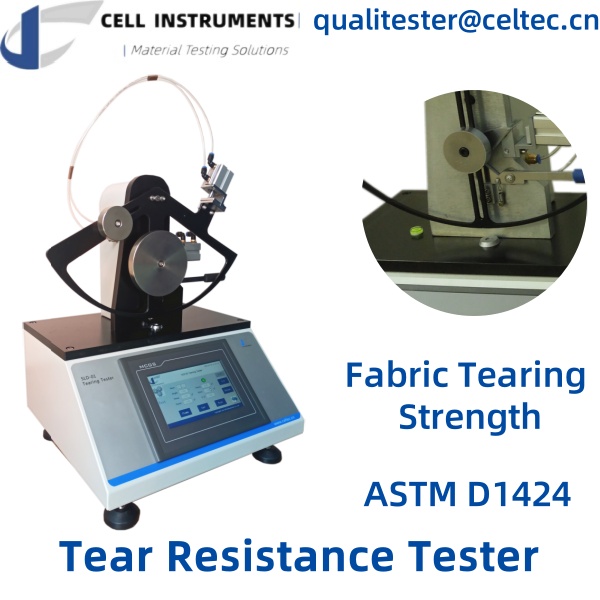The Importance of Tear Resistance Tester
Tear resistance, often referred to as tear strength, measures a material’s ability to withstand forces that could cause it to tear or break. This property is especially crucial in industries where material durability is paramount, such as packaging, textiles, and medical devices. A material’s tear resistance can be the difference between a product that performs reliably under stress and one that fails prematurely.
Understanding Tear Resistance Standards
Various standards govern the testing of tear resistance to ensure consistency and reliability in results. Key among them are:
- ASTM D1424: Focuses on the tear resistance of fabric and is a widely recognized standard for determining fabric tearing strength.
- ISO 6383: Specifies methods for determining the tear resistance of plastic films and sheeting.
- ASTM D1922: A standard for testing the tear resistance of thin plastic film and sheeting.
- ASTM D689: Involves testing the tear strength of paper.
- ISO 1974: Similar to ASTM D1424, it is used for testing the tear resistance of paper and board.
These standards guide the methodology, equipment, and interpretation of results, ensuring that materials are tested under consistent conditions.
How a Tear Resistance Tester Works
The SLD-01 Tear Tester by Cell Instruments is designed to measure the tear resistance of various materials accurately. The test involves creating a slit in the material and then using a pendulum mechanism to propagate the tear. The energy lost by the pendulum during the tear process is measured, and this energy is used to calculate the material’s tear resistance.
The SLD-01 Tear Tester offers several features that enhance its accuracy and ease of use:
- PLC Control and HMI Touch Screen: These features provide precise control and ease of operation.
- Pneumatic Specimen Clamping: Ensures consistent and reliable specimen holding during testing.
- Wide Test Range: Accommodates different materials and testing requirements.
- Compliance with Industry Standards: The tester meets all major standards, including ASTM D1922 and ISO 6383, ensuring reliable and consistent results.
Applications of Tear Resistance Testing
Tear resistance testing is vital in various industries, including:
- Packaging: Ensuring that packaging materials can withstand the rigors of handling and transport.
- Textiles: Determining fabric durability in clothing, upholstery, and industrial applications.
- Medical Devices: Assessing the durability of materials used in medical equipment and packaging.
- Paper and Cardboard: Evaluating the tear strength of paper products to ensure they meet industry standards.
Why Choose Cell Instruments’ SLD-01 Tear Tester
The SLD-01 Tear Tester is a reliable choice for professionals who need to ensure the tear resistance of their materials. With features like automatic pendulum release, pneumatic specimen clamping, and compliance with major standards, it offers a comprehensive solution for accurate and consistent tear testing.
Conclusion
Tear resistance is a critical factor in material durability and performance. By using the right testing equipment and adhering to recognized standards like ASTM D1424 and ISO 6383, manufacturers can ensure their products meet the necessary quality requirements. The SLD-01 Tear Tester from Cell Instruments is an excellent tool for achieving this, offering precision, reliability, and ease of use in tear resistance testing.
FAQ:
- What is tear resistance, and why is it important?
- Tear resistance measures a material’s ability to withstand tearing forces, crucial for ensuring durability and performance in various applications.
- What standards are used for tear resistance testing?
- Key standards include ASTM D1424, ISO 6383, ASTM D1922, ASTM D689, and ISO 1974, which guide the testing process for different materials.
- How does the SLD-01 Tear Tester work?
- The tester uses a pendulum mechanism to measure the energy required to propagate a tear in the material, providing an accurate assessment of tear resistance.
- What industries benefit from tear resistance testing?
- Industries like packaging, textiles, medical devices, and paper products rely on tear resistance testing to ensure material quality.
- Why choose the SLD-01 Tear Tester from Cell Instruments?
- It offers features like pneumatic specimen clamping, automatic pendulum release, and compliance with major standards, ensuring accurate and reliable results.


